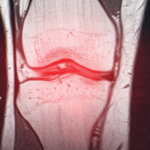“As a pediatric rheumatologist, JIA patients are foremost in my mind,” Dr. Chang says. “Local [resident memory T cell] depletion would be an ideal strategy for patients with RA or JIA who are in remission, but are unable to come off of systemic immunosuppressive medications.”
Currently, Dr. Chang and colleagues are working on multiple fronts to further investigate resident memory T cells activity and arthritis flares. They are trying to understand how these cells are formed in the joint and how they interact with other cells in the synovium to trigger a flare.
“Most importantly, we are working on developing a more effective way of targeting these cells and how to translate this [approach] into a system that can be used in patients,” Dr. Chang says.
Carina Stanton is a freelance science journalist based in Denver.
References
- Chang MH, Levescot A, Morris A, et al. Murine model of arthritis flare identifies CD8+ tissue resident memory T cells in recurrent synovitis [abstract]. Arthritis Rheumatol. 2017 Oct;69(suppl 4).
- Chang M, Levescot A, Blaustein R, et al. Persistent synovial resident memory T cells mediate arthritis flares [abstract]. Arthritis Rheumatol. 2019 Oct;71(suppl 10).


